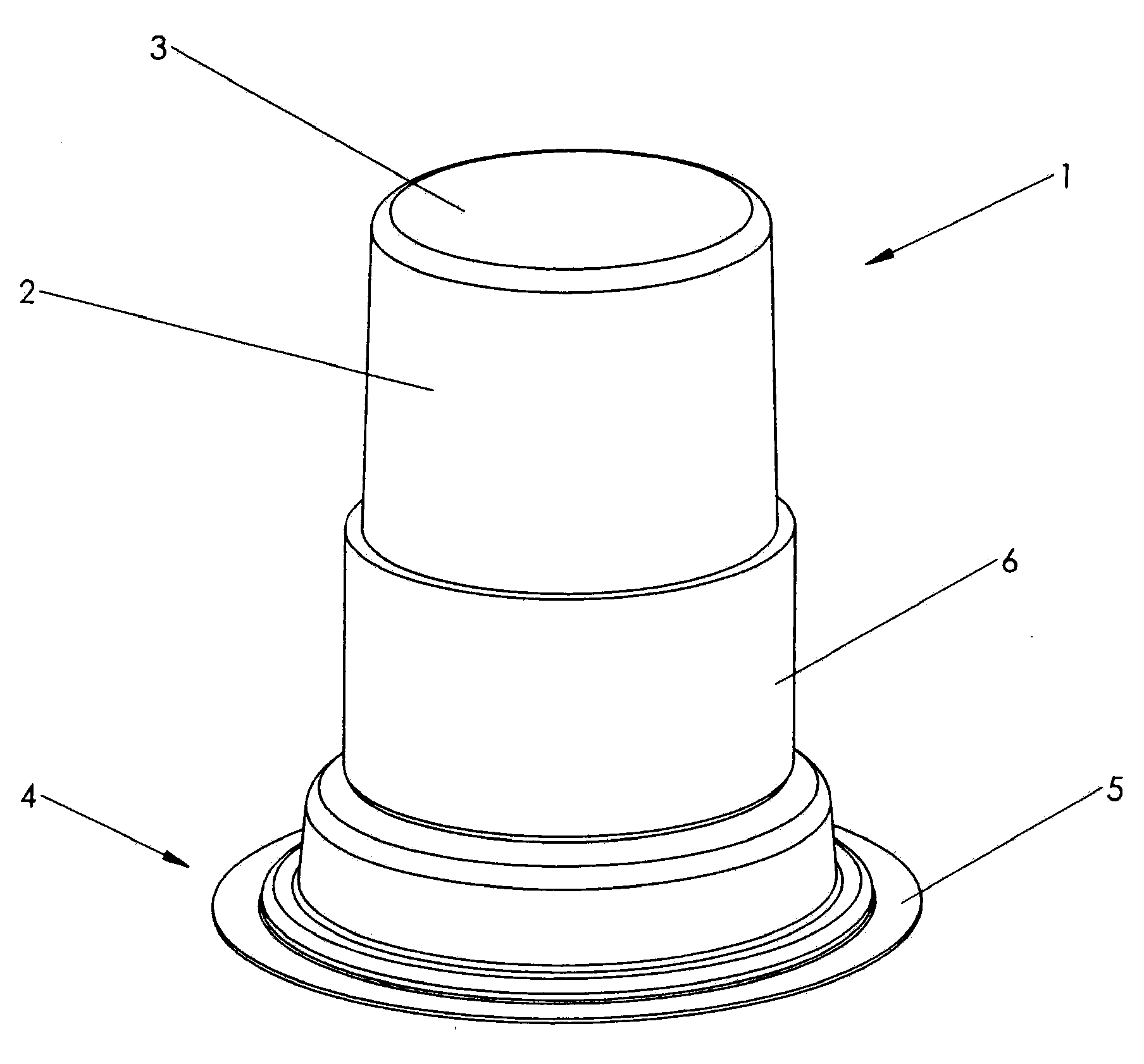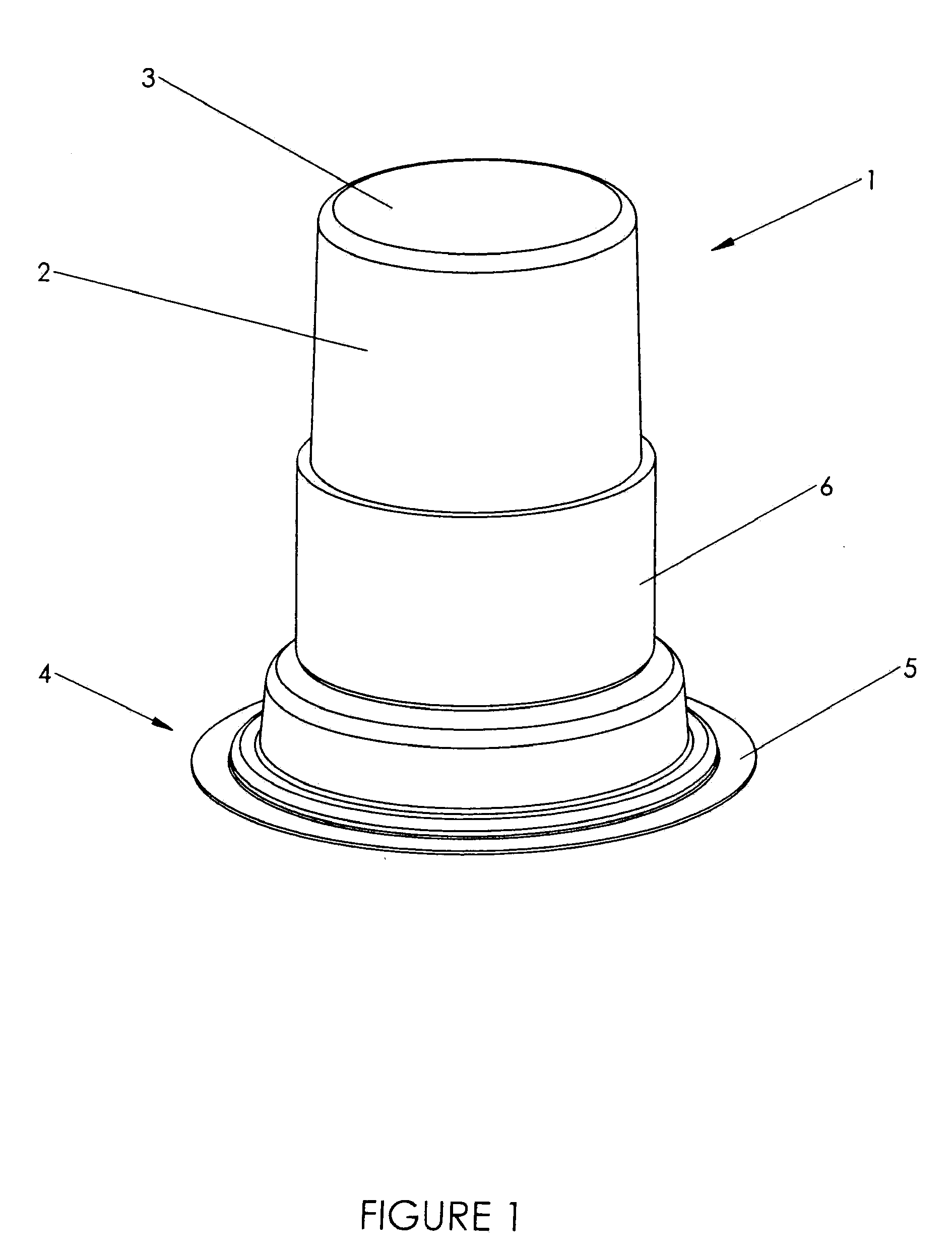Method for adding a fusible material to a container wall
- Summary
- Abstract
- Description
- Claims
- Application Information
AI Technical Summary
Benefits of technology
Problems solved by technology
Method used
Image
Examples
example
[0039]Utilizing the system generally depicted in FIGS. 1-2, a wax ring was melted and solidified onto a cup. The cup was a 290-cc cup approximately 6 cm in diameter, of approximately 0.2 mm thickness. A wax ring having a melting temperature of 67° C. was prepared. The ring had a thickness of approximately 0.3 cm and a height of approximately 3.5 cm. It contained as suppressant composition for a polyol / potassium permanganate heater 10 g of borax.
[0040]The ring was slipped over the wall of an inverted cup at room temperature and lightly pressed onto the cup by hand. The ring-cup assembly was then placed within a circular induction coil of a laboratory-size, 1500 watt induction heater. If the cup was filled with water (product), melting of the ring's inner surface onto the cup surface was achieved with settings of 99% power and a dwell time of 4 seconds. If the cup was empty, melting of the ring's inner surface onto the outer surface of the cup was achieved with settings of 87% power a...
PUM
| Property | Measurement | Unit |
|---|---|---|
| Shape | aaaaa | aaaaa |
| Electric potential / voltage | aaaaa | aaaaa |
| Metallic bond | aaaaa | aaaaa |
Abstract
Description
Claims
Application Information
 Login to View More
Login to View More - R&D
- Intellectual Property
- Life Sciences
- Materials
- Tech Scout
- Unparalleled Data Quality
- Higher Quality Content
- 60% Fewer Hallucinations
Browse by: Latest US Patents, China's latest patents, Technical Efficacy Thesaurus, Application Domain, Technology Topic, Popular Technical Reports.
© 2025 PatSnap. All rights reserved.Legal|Privacy policy|Modern Slavery Act Transparency Statement|Sitemap|About US| Contact US: help@patsnap.com



